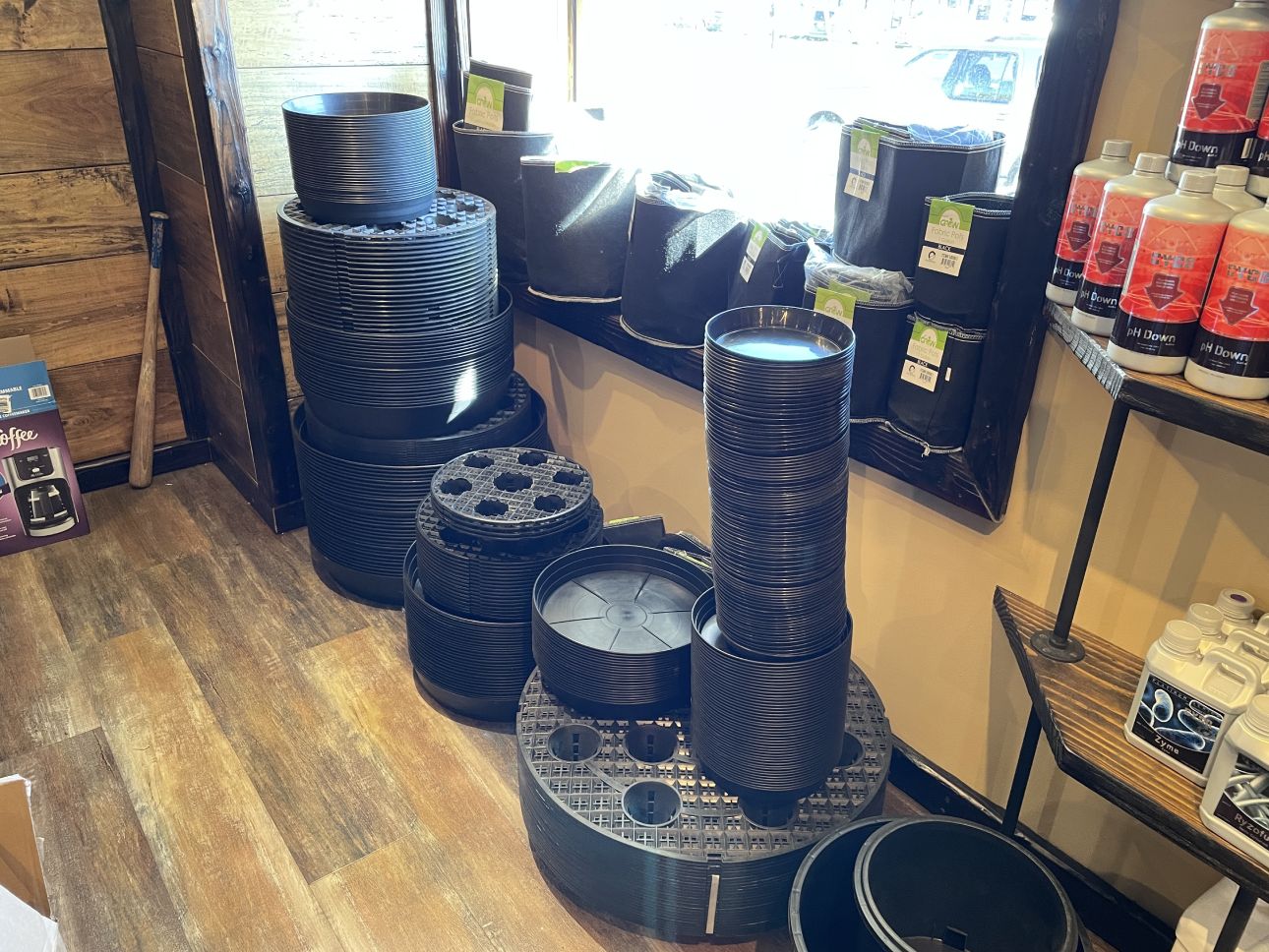Discover the Ultimate Planting Strategy: The Indoor Earthworm Approach
Discover the Ultimate Planting Strategy: The Indoor Earthworm Approach
Blog Article
Utilizing the Power of Hydroponics: a Deep Study Uses and Different Types
In the world of modern-day agriculture, hydroponics has actually arised as a method that tests standard farming practices by offering a space-saving and water-efficient alternative. The utilization of hydroponic systems opens up a world of opportunities for cultivating plants in varied settings, eventually affecting food manufacturing and sustainability. As we navigate with the intricate landscape of hydroponics, discovering its different types and applications, a deeper understanding of its prospective to change farming techniques and address international food protection problems starts to unravel.
Advantages of Hydroponic Farming
Hydroponic farming uses countless advantages over conventional soil-based farming. One of the main benefits is water effectiveness; hydroponic systems use up to 90% much less water compared to traditional farming approaches.
Moreover, hydroponic farming enables better control over nutrient degrees, causing faster plant development and higher returns. By providing vital nutrients straight to the plant origins, hydroponic systems advertise healthier and a lot more durable plant advancement. Additionally, the regulated environment of hydroponic systems reduces the threat of pests and conditions, reducing the requirement for dangerous chemicals and herbicides.

Typical Sorts Of Hydroponic Systems
Provided the countless advantages of hydroponic farming, it is necessary to discover the numerous usual types of hydroponic systems made use of in modern-day agriculture. One widespread kind is the Deep Water Culture (DWC) system, where plant roots are immersed in a nutrient option. Another usual system is Nutrient Film Method (NFT), which entails a thin film of nutrient-rich water moving over the roots - The Indoor Earthworm. The Ups and downs system, also referred to as Flood and Drainpipe, occasionally floodings the plant origins with nutrient solution prior to draining it. Aeroponics stands apart for its method of suspending plant roots in the air and misting them with a nutrient service. Leak systems provide a controlled amount of nutrient remedy directly to the plant's base. Wick systems, the easiest form of hydroponics, use a wick to passively supply vitamins and mineral solution to the plant roots. Each of these systems provides and uses one-of-a-kind advantages to different plant kinds and development phases in hydroponic farming.
Nutrient Film Method (NFT) System

One of the vital benefits of the NFT system is its water efficiency. The Indoor Earthworm. Because the nutrient remedy is recirculated in a shut system, this method uses substantially much less water contrasted to typical dirt farming. Additionally, the NFT system is space-efficient, making it optimal for interior farming or in locations with limited area for standard farming
Nonetheless, the NFT system calls for cautious surveillance and upkeep to guarantee the constant circulation of water and nutrients. Any type of disruption in the flow can rapidly influence plant health and wellness. In general, the NFT system provides a effective and lasting way to grow plants hydroponically, particularly for crops that thrive in well-oxygenated origin settings.
Deep Water Culture (DWC) System
Relocating from the Nutrient Movie Strategy (NFT) system, the Deep Water Culture (DWC) system is a hydroponic method that involves suspending plant origins straight in a nutrient service. Unlike NFT, where origins are continuously subjected to a thin movie of nutrient service, DWC plants have their roots immersed in a tank loaded with oxygenated nutrient water. The origins hang in the nutrient service, enabling straight uptake of water and vital nutrients.
One of the crucial benefits of the DWC system is its simplicity and low upkeep demands. DWC systems call for appropriate aeration to avoid origin rot and make certain optimal nutrient absorption.
Aeroponic System
An ingenious approach in hydroponics cultivation, the Aeroponic System utilizes official statement a misting or misting system to provide nutrients directly to plant origins put on hold in the air. This system is known for its ability to promote quick growth and effective nutrient uptake because of the direct delivery of nutrients to the origins, permitting the plant to focus its energy on development instead than looking for nutrients. In an aeroponic setup, plants are usually housed in a closed atmosphere where the origins are intermittently misted with a nutrient service. This misting cycle makes certain that the roots receive sufficient oxygen, promoting healthy and balanced origin development and general plant development.
Among the key benefits of aeroponics is its water effectiveness, as the system uses substantially much less water contrasted to traditional soil-based cultivation methods. In addition, the exact shipment of nutrients straight to the origins can lead to greater returns and faster development rates. While aeroponics can be extra complex to set up and maintain contrasted to various other hydroponic systems, its potential for boosted plant growth and effectiveness makes it a prominent choice for hydroponic lovers and business growers looking for optimum outcomes.
Conclusion
To conclude, hydroponic farming offers various advantages and different kinds of systems to choose from. The Nutrient Film Strategy (NFT) system, Deep Water Society (DWC) system, and Aeroponic system are amongst the most typical techniques utilized in hydroponics. Each system has its very own benefits and limitations, making it necessary for farmers to thoroughly consider their needs and preferences before choosing one of the most ideal system for their crops.
Unlike other hydroponic systems where plants are submerged in a nutrient service, in the NFT system, the roots are subjected to the water only in a shallow film.Relocating from the Nutrient Movie Method (NFT) system, the Deep Water Culture (DWC) system is a hydroponic technique that entails putting on hold plant roots straight in a nutrient solution.A cutting-edge method in hydroponics farming, the Aeroponic System makes use of a misting or misting system to supply nutrients directly to plant origins suspended in the air. The Nutrient Movie Strategy (NFT) system, Deep Water Culture (DWC) system, and Aeroponic system are amongst the most typical methods used in hydroponics. Each system has its very own benefits and restrictions, making it essential for farmers to very carefully consider their demands and choices prior to picking the most appropriate system for their crops.
Report this page